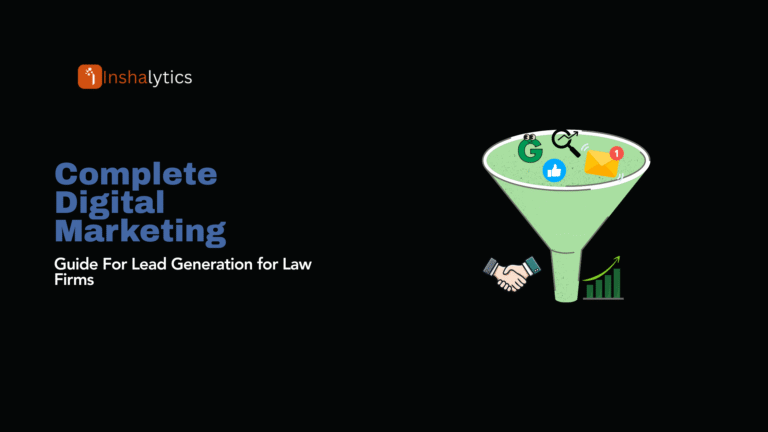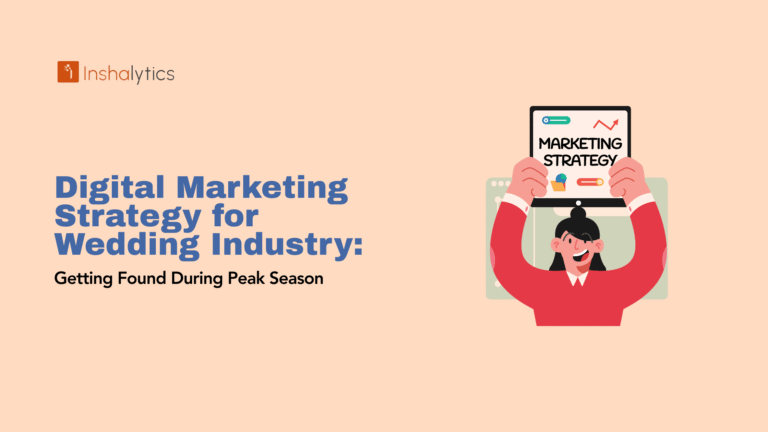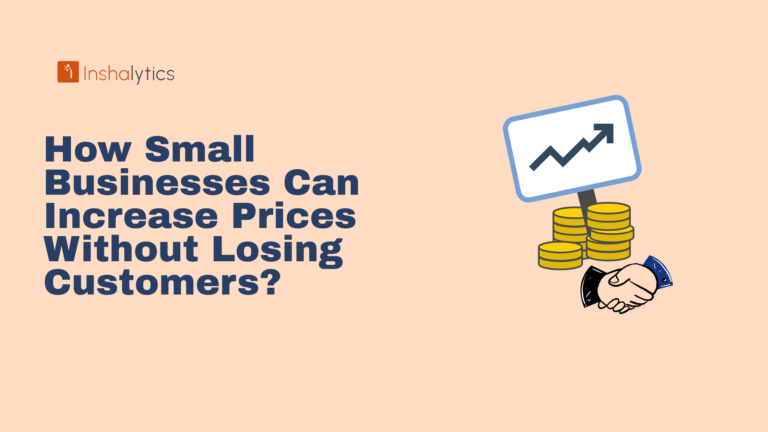Your website could be leaking money right now. Every visitor who leaves without converting represents lost revenue, and most businesses have no idea how many potential customers they’re losing daily. This comprehensive 5-minute audit will help you identify the biggest conversion killers on your site and fix them fast.
Why Website Conversion Audits Matter? (The 47% Revenue Gap)
Research shows that the average website converts only 2.35% of visitors, while top-performing sites achieve conversion rates above 11%. This means most businesses are missing out on nearly half their potential revenue simply because their website isn’t optimized for conversions.
The cost of poor conversion optimization is staggering. A website receiving 10,000 monthly visitors with a 2% conversion rate generates 200 leads. By optimizing to just 4% (still below industry leaders), that same traffic would produce 400 leads, doubling your results without spending a penny more on marketing.
The good news? Most conversion issues can be identified and fixed quickly. You don’t need expensive tools or months of testing. This 5-minute audit, paired with our website conversion audit form template, will reveal the low-hanging fruit that can immediately boost your conversion rates.
The 5-Minute Conversion Audit Framework
This systematic approach divides your audit into three focused phases, each targeting the highest-impact areas of your conversion funnel. Grab a timer and follow along we’ll move fast but cover everything that matters.
Phase 1: Above-the-Fold Analysis (90 seconds)
Your above-the-fold area is prime real estate. Visitors decide whether to stay or leave within 3-5 seconds, making this section critical for conversions.
Headline and Value Proposition Check
Your headline should immediately communicate what you do and why visitors should care. Test it with the “5-second rule” can a first-time visitor understand your value proposition in 5 seconds or less?
Red flags to look for:
- Generic headlines like “Welcome to Our Website”
- Industry jargon that confuses rather than clarifies
- Missing benefit statements
- Unclear target audience
Quick fix: Rewrite your headline to follow this formula: “We help target audience achieve desired outcome through your solution.”
Call-to-Action Button Assessment
Your primary CTA should be the most prominent element on the page. It needs to stand out visually and use compelling, action-oriented language.
Evaluation criteria:
- Is it visually distinct from other page elements?
- Does it use contrasting colors?
- Is the text specific rather than generic?
- Is it placed in a logical position?
Quick fix: Replace weak CTAs like “Submit” or “Learn More” with specific, benefit-driven alternatives like “Get My Free Quote” or “Start My 30-Day Trial.”
Visual Hierarchy Evaluation
Your page should guide visitors’ eyes naturally toward your conversion goal. The most important elements should be the largest, boldest, or most colorful.
Check for:
- Clear visual flow from headline to CTA
- Appropriate use of white space
- Consistent color scheme that supports conversions
- Images that support rather than distract from your message
Phase 2: User Experience Quick Scan (120 seconds)
User experience directly impacts conversion rates. Friction in navigation, slow loading times, or mobile issues can kill conversions before they start.
Mobile Responsiveness Test
With mobile traffic accounting for over 50% of web visits, mobile optimization isn’t optional. Your site must work flawlessly on smartphones and tablets.
Quick mobile test:
- Open your site on your phone
- Check if the text is readable without zooming
- Verify buttons are easily tappable
- Test your conversion forms on mobile
Common mobile conversion killers:
- Forms that are difficult to complete on small screens
- Buttons too small for fat fingers
- Pop-ups that can’t be closed on mobile
- Slow-loading mobile pages
Page Load Speed Check
Every second of load time costs you conversions. Amazon found that a 1-second delay in page loading decreases conversions by 7%.
Free speed test tools:
- Google PageSpeed Insights
- GTmetrix
- Pingdom
Target benchmarks:
- Desktop: Under 3 seconds
- Mobile: Under 4 seconds
Quick speed wins:
- Compress large images
- Minimize plugins and widgets
- Enable browser caching
- Use a content delivery network (CDN)
Navigation and Menu Review
Confusing navigation creates friction that kills conversions. Visitors should be able to find what they’re looking for in 3 clicks or less.
Navigation audit points:
- Is your menu structure logical and intuitive?
- Can visitors easily return to your homepage?
- Are important pages easily accessible?
- Is your search function (if present) working properly?
Phase 3: Conversion Funnel Assessment (90 seconds)
This final phase focuses on the specific elements that directly impact your conversion rates, forms, trust signals, and the conversion process itself.
Form Optimization Analysis
Forms are often the biggest conversion bottlenecks. Every additional field reduces completion rates, and poor form design can cut conversions in half.
Form audit checklist:
- Minimize required fields (ask only for essential information)
- Use clear, descriptive labels
- Implement real-time validation
- Show progress indicators for multi-step forms
- Make optional fields clearly marked
Conversion-killing form mistakes:
- Asking for phone numbers when email suffices
- Using unclear error messages
- Requiring account creation before purchase
- Hiding required field indicators
Trust Signal Verification
Trust signals reduce buyer anxiety and increase conversion rates. Without proper trust indicators, visitors will abandon your site even if they’re interested in your offer.
Essential trust signals:
- Customer testimonials with photos and names
- Security badges and SSL certificates
- Money-back guarantees
- Contact information and physical address
- Professional design and error-free copy
Trust signal placement:
- Near your primary CTA
- On checkout or contact pages
- In your website footer
- Throughout your sales process
Checkout/Contact Process Review
The final step of your conversion funnel is often where you lose the most prospects. Every unnecessary step or confusing element can derail a conversion.
Checkout/contact optimization:
- Minimize the number of steps required
- Show clear progress indicators
- Offer guest checkout options
- Display security information prominently
- Include multiple contact methods
Free Website Conversion Audit Checklist
Use this comprehensive checklist to systematically evaluate your website’s conversion potential.
Pre-Audit Setup (What You’ll Need)
Before starting your audit, gather these tools and information:
Required tools:
- Smartphone or tablet for mobile testing
- Stopwatch or timer
- Notepad for recording issues
- Google PageSpeed Insights (free)
Preparation steps:
- Clear your browser cache
- Test from an incognito/private window
- Have a friend or colleague help for objective feedback
- Document your current conversion rate as a baseline
The Complete 25-Point Conversion Checklist
Print this checklist and check off each item as you complete your audit.
Design & Layout (8 checkpoints)
□ Headline clarity: Can first-time visitors understand what you do within 5 seconds?
□ Value proposition: Is your unique selling proposition clearly communicated above the fold?
□ Visual hierarchy: Do the most important elements (headline, CTA) stand out visually?
□ Color contrast: Does your primary CTA button contrast strongly with the background?
□ White space usage: Is there adequate spacing around key elements to make them stand out?
□ Image relevance: Do images support your message rather than distract from it?
□ Font readability: Is all text easy to read on both desktop and mobile devices?
□ Professional appearance: Does your site look trustworthy and professionally designed?
Content & Messaging (6 checkpoints)
□ Benefit-focused copy: Does your content focus on customer benefits rather than features?
□ Clear CTA text: Are your call-to-action buttons specific and compelling?
□ Urgency/scarcity: Do you include appropriate urgency or scarcity elements where relevant?
□ Social proof: Are customer testimonials, reviews, or case studies prominently displayed?
□ Objection handling: Does your content address common customer concerns and objections?
□ Consistent messaging: Is your value proposition consistent across all pages?
Technical Performance (5 checkpoints)
□ Page load speed: Do your pages load in under 3 seconds on desktop, 4 seconds on mobile?
□ Mobile responsiveness: Does your site work perfectly on smartphones and tablets?
□ Form functionality: Do all forms work properly and provide clear feedback?
□ Broken links: Are all internal and external links functioning correctly?
□ Cross-browser compatibility: Does your site work in Chrome, Firefox, Safari, and Edge?
Trust & Security (6 checkpoints)
□ SSL certificate: Does your site use HTTPS and display security indicators?
□ Contact information: Is your phone number, email, and address easily accessible?
□ Privacy policy: Do you have a clear privacy policy linked in your footer?
□ Trust badges: Are relevant security and trust badges displayed near forms and CTAs?
□ About page: Does your About page build credibility with team photos and company story?
□ Customer reviews: Are authentic customer testimonials prominently featured?
How to Interpret Your Audit Results?
Your audit score will help you prioritize improvements and understand your site’s current conversion potential.
Scoring Your Website (0-25 Points)
Count up your checkmarks to get your conversion optimization score:
Scoring breakdown:
- Each completed checklist item = 1 point
- Maximum possible score = 25 points
- Minimum recommended score = 18 points
Score interpretation:
- 22-25 points: Excellent (minor optimizations needed)
- 18-21 points: Good (moderate improvements required)
- 14-17 points: Fair (significant optimization opportunity)
- Below 14 points: Poor (major conversion issues present)
Priority Action Items by Score Range
Score 22-25 (Excellent): Focus on advanced optimization techniques like A/B testing headlines, experimenting with different CTA colors, and optimizing for specific traffic sources.
Score 18-21 (Good): Address any missing trust signals, optimize form fields, and improve page load speeds. Consider implementing exit-intent pop-ups and email capture sequences.
Score 14-17 (Fair): Prioritize mobile optimization, simplify your value proposition, and reduce form complexity. These changes will provide the biggest impact on conversions.
Score Below 14 (Poor): Start with basics: fix broken elements, improve page speed, clarify your headline, and add essential trust signals. Consider a website redesign if issues are widespread.
Quick Wins: 3 Changes That Boost Conversions Immediately
These three modifications can be implemented today and typically increase conversion rates within 24-48 hours.
Quick Win #1: Optimize Your Primary CTA Button
Change your main call-to-action button to use a contrasting color and specific, benefit-driven text. Instead of “Submit” or “Click Here,” use phrases like “Get My Free Consultation” or “Download My Guide Now.”
Expected improvement: 10-30% increase in button clicks.
Quick Win #2: Add Social Proof Above the Fold
Place a customer testimonial or trust badge prominently in your header area. Include the customer’s photo, name, and specific results they achieved.
Expected improvement: 5-15% increase in overall conversions.
Quick Win #3: Simplify Your Lead Capture Form
Remove any non-essential form fields. If you’re asking for more than name and email address, justify why each additional field is absolutely necessary.
Expected improvement: 15-40% increase in form completions.
Advanced Conversion Optimization Strategies
Once you’ve addressed the basics, these advanced techniques can help you achieve elite-level conversion rates.
Heat Mapping and User Session Recording
Tools like Hotjar or Crazy Egg show exactly how visitors interact with your pages. You can see where people click, how far they scroll, and where they abandon your site.
A/B Testing Implementation
Test different versions of key pages to see what converts better. Start with high-impact elements like headlines, CTAs, and form layouts. Tools like Google Optimize offer free A/B testing capabilities.
Personalization and Dynamic Content
Show different content based on visitor behavior, traffic source, or demographics. Returning visitors might see different messaging than first-time visitors.
Exit-Intent Technology
Capture visitors who are about to leave with targeted pop-ups or special offers. This last-chance strategy can recover 10-15% of abandoned visitors.
Conversion Funnel Analysis
Map out every step of your conversion process and identify where visitors drop off. Focus your optimization efforts on the biggest leaks in your funnel.
Remember: Conversion optimization is an ongoing process, not a one-time fix. Run this 5-minute audit monthly to catch new issues and track your improvements over time. Small, consistent optimizations compound to create dramatic results in your overall conversion performance.




